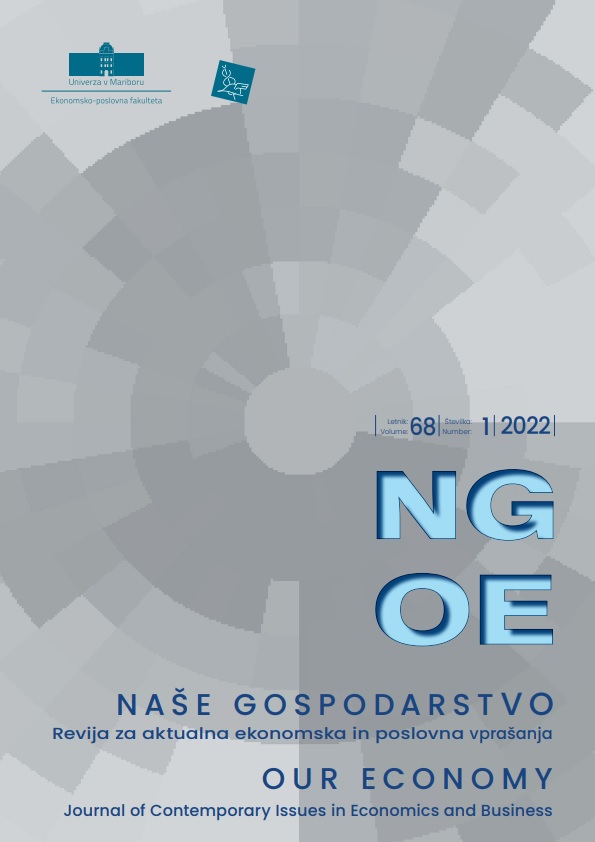A Comparative Analysis of Competitive Trade in a Cluster Market of the European Union: The Revealed Comparative Advantage (RCA) Index
Keywords:
competitiveness, revealed comparative advantage, international trade, Analysis, (RCA) IndexAbstract
This research is concerned with the comparative analysis of competitive trade within the cluster market economies of the European Union. The aim of this paper is to carry out trade analysis within the competing countries in the European market from 2009 to 2018 which represents the period after the global crisis of 2008 and prior to the Covid-19 pandemic of 2019 for the purpose of determining the extent of competitive trade within the European economies. The chosen metric is Béla Balassa’s Revealed Comparative Advantage (RCA) index used for determining various countries’ comparative advantage or disadvantage in trade. The findings show that the countries with RCA > 1 thrive economically in comparison to other competing lower economies. And the fact that the European Union economy thrives on mechanized trade other than agricultural products irrespective of the competitive market. This study is a significant contribution towards improving the Ricardian model of comparative advantage on trade within a cluster market in the European economies.
Downloads
References
Adigwe, E. O. (2021). Revealed Comparative Advantage (RCA) Index: Analysis of Export Trade in the Competitive Economies of the European Union (pp. 8-17). Proceedings of an International Scientific Conference at the University of Economics in Bratislava, June 4, 2021. Vydavateľstvo EKONÓM. ISBN: 978 – 80 – 225 – 4832 – 8
Albrow, M., & King, E. (1990). Globalization, Knowledge and Society. International Sociology. Thousand Oaks: Sage.
Balassa, B. (1965). Trade Liberalization Revealed Comparative Advantage. The Manchester School of Economic and Social Studies, 33, 99-123. https://doi.org/10.1111/j.1467-9957.1965.tb00050.x
Bogliacino, F. (2020). Inequality and Europe 2020. Intereconomics, 49(5), 288-294. https://doi.org/10.1007/s10272-014-0511-1
Dalum, B., Laursen, K., Villumsen, G. (1998). Structural change in OECD export specialization patterns. International Review of Applied Economics, 12, 423-443. https://doi.org/10.1080/02692179800000017
Eurostat Database. Retrieved from https://ec.europa.eu/eurostat/data/database.
Faccarello, G. (2017). A calm investigation into Ricardo’s principle of international trade. The European Journal of the History of Economic Thought, 22(5), 754-790. https://doi.org/10.1080/09672567.2015.1086011
Francesco, B., Virginia, M. (2016). Wealth Inequality and the Great Recession, Intereconomics 51(2), 61-66. https://doi.org/10.1007/s10272-016-0578-y
Hinloopen, J., Marrewijk, V.C. (2001). On the empirical distribution of the Balassa index. Weltwirtschaftliches Archive, 137(1), 1-35. https://doi.org/10.1007/BF02707598
Hinloopen, J., Marrewijk, V.C. (2008). Empirical relevance of the Hillman condition for revealed comparative advantage: 10 Stylized Facts. Applied Economics, 40(18), 2313-2328. https://doi.org/10.1080/00036840600949488
Hoen, A., Oosterhaven, J. (2006). On the measurement of comparative advantage. Annals of Regional Science, 40, 677 - 691. https://doi.org/10.1007/s00168-006-0076-4
Jones, R. B. (1995). Globalization and Interdependence in the International Political Economy. London, New York: St. Martin’s Press.
Katz, F. (2018). Factors influencing international trade. Retrieved from: https://bizfluent.com/info-8210281-factors-influencing-international-trade.html
Laboutkova, S., Bednarova, P., Valentova, V. H. (2016). Economic Inequalities and the Level of Decentralization in European Countries: Cluster Analysis. Comparative Economic Research, 19(4), 27-46.
Lafay, G. (1992). The measurement of revealed comparative advantages, In: Dagenais, M. G. & Muet, P.-A. (eds.) International Trade Modelling. London: Chapman & Hall.
Leromain, E. & Orefice, G. (2013). New revealed comparative advantage index: Dataset and empirical distribution. CEPII Working paper No. 2013-20.
Liesner, H. H. (1958). The European Common Market and British Industry. The Economic Journal, 68(270), 302-316. https://doi.org/10.2307/2227597
Marrewijk, C. V. (2017). International trade. Oxford, UK: Oxford University Press. Retrieved from: https://moam.info/marrewi-jk-c-van-2017-international-trade-oxford-university-press-:
Martins, H.-P., Schumann, H., Camiller P. (1997). The Global Trap: Globalization and the Assault on Prosperity and Democracy. London: Zed Books.
Milanovic, B. (2012). Global Income Inequality by the Numbers: In History and Now - An Overview. Policy Research Working Paper No.6259. World Bank, Washington DC. https://doi.org/10.1596/1813-9450-6259
Nansen, T. (2017). What are some of the forces that affect trading in global market? Retrieved from: http://bizfluent.com/info-7814010-forces-affect-trading-global-markets.html
OECD. Income Inequality in the EU (2012). Retrieved from https://oecd-ilibrary.org/economics/income_inequality in the EU.
Proudman, J., Redding, S. (2000). Evolving patterns of international trade. Review of International Economics, 8, 373-396. https://doi.org/10.1111/1467-9396.00229
Sanidas, E. (2007). Revealed comparative advantage and economic development with emphasis on East Asia. Proceedings of the Korea in the World Economy, VI Conference, 2, 445-463.
Wyplosz, C. (2013). The Eurozone Crisis and the Competitiveness Legend. Asian Economic Papers, 12(3), 63-81. https://doi.org/10.1162/ASEP_a_00238
Yeats, A. J. (1985). On the Appropriate Interpretation of the Revealed Comparative Advantage Index: Implications of a Methodology Based on Industry Sector Analysis. Weltwirtschaftliches Archiv, 121(1), 61-73. https://doi.org/10.1007/BF02705840
Yu, R., Cai, J., & Leung, P. (2009). The normalized revealed comparative advantage index. Annals of Regional Science, 43, 267- 282. https://doi.org/10.1007/s00168-008-0213-3
Zafiu C. D., Cucos Saracu, A.F. (2012). The Economic Crisis – Meanings and Significations. Risk in Contemporary Economy, 111-114. Retrieved from: https://econpapers.repec.org/article/ddjfserec/y_3a2012_3ap_3a111-114.htm
